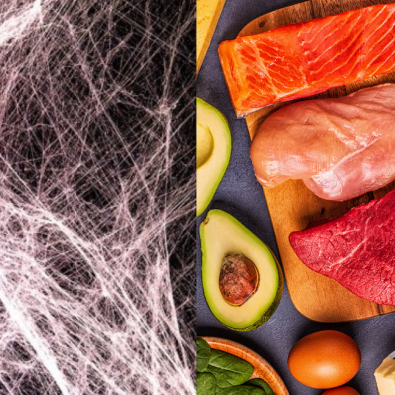Nutrition for Healthy Connective Tissue
Fascia & Nutrition Part 1: Foods that Strengthens Connective Tissue
Welcome to our 5 part series about how to protect and nourish your fascia. Fascia is the connective tissue that keeps muscles, organs and bones in shape and structural support. Diet plays a vital role in the health of the fascia. To a large extent, fascia consists of the proteins - collagen and elastin. Proteins are made up of different amino acids. There are several hundred amino acids, but human proteins are only made up of 20 different ones. Humans can produce twelve called non-essential amino acids. The human body cannot produce the eight remaining essential amino acids on its own. For healthy and supple fascia they must be supplemented into the diet.
Essential amino acids
Collagen and elastin contain the predominantly non-essential amino acids glycine, proline and alanine. There are some building blocks that we can only take in through food; such as valine, leucine, isoleucine and/or lysine, which are necessary for the production of collagen and elastin. A healthy diet rich in amino acids is necessary for the production of these proteins.
-
Meat (Beef - red meats)
-
Sausage (including pork)
-
Fish (Tuna or salmon)
-
Cheese
-
Nuts (Almonds, walnuts)
-
Legumes (Beans, lentils)
-
Walnuts
-
Soybeans
-
White beans
-
Lentils
A mixture of animal and vegetable protein is best: Animal protein contains almost all the important amino acids in adequate ratio. However, it’s high in fat, cholesterol, table salt and purines. The latter can be found in large quantities, especially in animal cells. When purines are broken down, uric acid is produced in the body. Some people, on the other hand, cannot excrete them sufficiently, which can lead to deposits in the joints and thus to gout. Vegetable protein, on the other hand, is less usable by the body, but contains hardly any harmful substances. In general, a balanced, varied diet is advisable to keep the fascia healthy.
Written by: Dr. Joni Chapman
